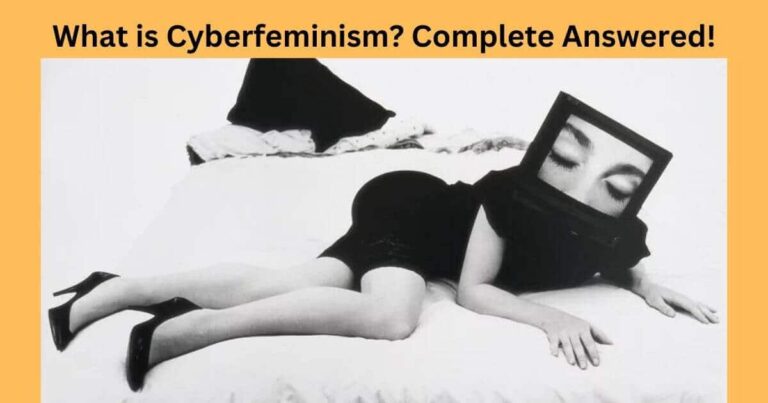Feminism is about equal gender rights for women. Feminist movements empower women to get the equal rights to value their potential through devaluing gender discrimination. There are different feminist movements throughout history like the suffrage movement, gender equality and women inclusion. The first feminist movement started back in the third century when a roman statesman, Marcus Porcius Cato, passed a law to limit the women’s usage of expensive goods. The early 15th century Italian French poet, Christine de Pisan, enforced women equality through education. Christine’s famous work “The Book of the City of Ladies” devalues the negative views about women and highlights the nobility of women. The feminist movement evolves with technological advancements. So, what is Cyberfeminism? Cyberfeminism is the form of cyber activism that supports women’s rights through promoting technology space diversity. Cyperfeminist use digital art, online communities, and cyberspace to run their campaigns about cyberbullying or Identity Theft.
Cyberfeminism started in 1994 by the British philosopher Sadie Plant through highlighting the relationship of women, technology, and society. Her works cover the purpose and the behavior of feminine cyberspace. In this read, we share the cyberfeminism concept through the works of authors and researchers.
Sadie Plant Cyberfeminism Approach
The feminizing cyberspace directly challenges masculine identity. Cyberspace is seen to escape the physical body, a dream of Western patriarchal culture. The digitization process is contributing to a feminization of society, with technology and women. The Masculine identity of our society is in crisis, with men feeling a loss of control and authority. Cyberpunk literature is explored as a genre that focuses on the collision with materiality rather than transcendence. There is the shift in identity and freedom that influences technological advancements. Feminism’s role in societal change due to the addition of non-human components. The digital world values the historical desire for body-mind separation. We can relate cyberspace to a dream of escaping the body.
Sarah Kember Approach
Sarah Kember is an author and professor who teaches communication technologies at Goldsmiths, University of London. She is famous for her work in cyberfeminism through her conferences, articles, and books like “Cyberfeminism and Artificial Life”. Her work explains the empowering and imposing impact of technology with artificial life existence. She critiques futuristic industry visions and their impact on women’s roles and identities. Glass technology is about openness, transparency, and possibilities in various social, cultural, and economic aspects.
The glass technology intersects with women’s roles in society, from housewives to professionals. Our glass technology describe as transforming into a “smart subject,” with digital representations of women. It is increasing the visibility of women in a consumer culture. Her work teaches us about importance of humor as a feminist strategy for critique and creativity, noting that humor can be a valuable tool for both. Contemporary feminisms are engaging in cultural production with humor, rudeness, and critical elements.
Legacy Russell Approach
Legacy Russell is an artist, writer, and cultural producer from New York City. She is the Founder of “glitch feminism,” a cultural movement using the internet to resist the dominance of the corporeal. She challenges the conventional notions of the body as a social construct. Glitch feminism gives you the purpose to trigger errors in the flawed societal system. Her work connects cyberfeminism with Afrofuturism. Your digital space is associated with cyber feminism and Glitch feminism. Read about Techno Thriller Definition.
Rosi Braidotti Approach
Rosie Bradotti is a prominent philosopher in feminist and posthumanism thinker. Rosie’s work explores complex issues related to gender, sexuality, technology, materiality, politics, power, marginalization, and ethics. Rosi Braidotti shares about the association critiques of humanism and anthropocentrism in the context of the posthuman condition. She emphasizes the importance of getting activated to think through and not giving in to the unthinkable. Her book published in 2021 named “Posthuman Feminism” which is about understanding feminism through postmodernism. She rejects human centrism and explains that traditional feminists have an impact on non-human projects like animals, technology, or climate change. She explains that Feminism taught us to distance ourselves from male violence.
Mindy Seu Cyberfeminism Approach
Miny Seu is a famous American designer whose work focuses on the public interaction with digital resources. Her famous project is the cyberfeminism index in which she discusses the connections of technology, feminism, and activism. Her project introduces to us the resources of techno critics work, especially women in the tech industry. She shares with us the voice of women in internet history through challenging traditional academic framework and encouraging techno activism. She Discuss the cyber feminism manifesto and its origins, blending technology and critique. The website that you are using right now is an online way for the Cyber Feminism Index.
